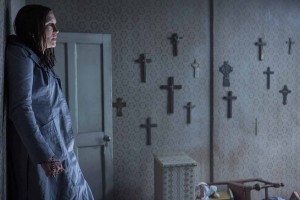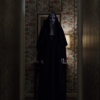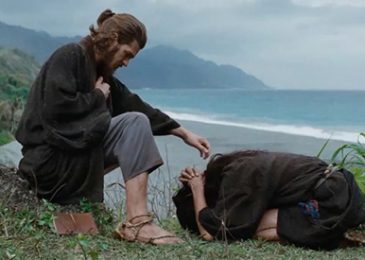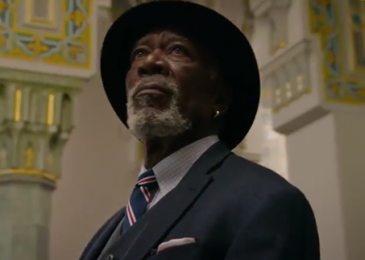To understand the underlying message of The Conjuring 2, you just have to look at its calendar.
The trials of the Hodgson family take place during London’s drippy, dark December. The days are growing shorter, the nights colder. And the things that go bump in the night at the Hodgson’s north London home are becoming ever more bold. Christmas spirit? More like Christmas spirits. Given the ghoulies that 11-year-old Janet Hodgson (Madison Wolfe) is dealing with, the girl would tell you that Scrooge got off lucky.
It’s fitting that The Conjuring 2—a new creepy classic of a ghost story—would take place at Christmastime. Even before Charles Dickens penned A Christmas Carol, ghost stories were as much a part of the season as presents and Figgie pudding. Indeed, even in pre-Christian times, the year’s darkest days of December were seen as times of heightened supernatural activity—a time when the ghostly Wild Hunt ran across the skies of northern Europe and the undead were more likely to walk.
Yes, December’s days are gloomy indeed.
Ed and Lorraine Warren (Patrick Wilson and Vera Farmiga), the demonologists sent to evaluate the Hodgson house, arrive in London on Dec. 21, the shortest day of the year. Life for the Hodgsons has grown correspondingly bleak before their arrival. Janet and sister Margaret no longer sleep in their bedroom—the apparent supernatural center of the house. Indeed, the room has been chained and padlocked shut. Inside, furniture lies scattered and broken. Crosses hang from the walls, in the vain hope that the symbol might keep the darkness at bay.
Instead, things seem to get worse over the next few days. Janet seems to slip ever deeper into the throes of whatever hopes to control her. The home grows more chaotic. And that, in some ways, is not the worst of it: Some wonder whether Janet is making the whole thing up, or whether the Hodgsons are perpetrating some sort of creative hoax. Even Lorraine Warren, the medium who typically can sense the stirring of even a ghost mouse, can’t feel anything beyond the family’s own fear.
Other experts speculate that the Hodgsons aren’t the only ones potentially making things up. Doubting parapsychologist Anita Gregory wonders aloud what is worse—demons or those who prey on people’s belief in them.
“The demons,” Lorraine says. “The demons are worse.”
“I’m not scared of the dark,” my 4-year-old son once told a family friend. “It’s the things in the darkness that I worry about.” Fear and horror thrive in darkness. In almost every great, classic horror story, there’s a sense that the night might never end. That the day might never come.
 Until recently Hollywood vampires were sequestered to live only in darkness. Werewolves came out when the moon was full. In haunted house stories like The Haunting, ghostly happenings are almost purely nocturnal activities. Some relatively new horror stories—2000’s Pitch Black or 2007’s 30 Days of Night, the storytellers create worlds where darkness lasts a lot longer. In Ridley Scott’s classic Alien, the terrors lurk in a dark, cold universe, where the sun can never rise.
Until recently Hollywood vampires were sequestered to live only in darkness. Werewolves came out when the moon was full. In haunted house stories like The Haunting, ghostly happenings are almost purely nocturnal activities. Some relatively new horror stories—2000’s Pitch Black or 2007’s 30 Days of Night, the storytellers create worlds where darkness lasts a lot longer. In Ridley Scott’s classic Alien, the terrors lurk in a dark, cold universe, where the sun can never rise.
In these stories, the characters fear. They doubt. Some give up. Some scoff and, almost always, die for their doubt. Some light our shaking candles and pray for the light.
All that is what makes Christmas such a metaphorically powerful holiday.
I don’t think most Christian scholars believe that Jesus was born on Dec. 25. But there’s a powerful symbolism attached to when we celebrate it. The date—so close to the Winter Solstice—tells believers something remarkable: That a light was born into a dark, doubting, fearful world. That we need not fear the darkness any longer.
The Conjuring 2 gleefully upturns at times this Christian sensibility up on its head. Never will you hear a creepier version of “Hark the Herald Angels Sing” anywhere. But in spite of that corrupted Christmas carol, the movie still believes. In the midst of the darkness and fear, it tells us, there’s hope. There’s light. There’s Jesus. And He’s more powerful than any ghost or demon that might come a calling.
Ed tells Janet about his own first frightening experience with the paranormal—when something actually reached out from under his bed and grabbed him. Ed, still a child, ran to his father. His dad (perhaps playing a bit of the doubter himself) gave Ed a crucifix and asked Ed to tell this thing to get lost. And if it didn’t, God was going to “kick its butt.”
That sense of power pervades The Conjuring 2: That God—and His servants—can kick demon butt. It might not be always easy. The cost may be great. But in the end, the demons don’t stand a chance.
I probably don’t need to say what day it was when the true evil in the Hodgson house is finally dispelled: Christmas Day. The day when Light vanquished darkness, when hope toppled fear. The horror is gone, the day has come. Glory to the newborn King.




